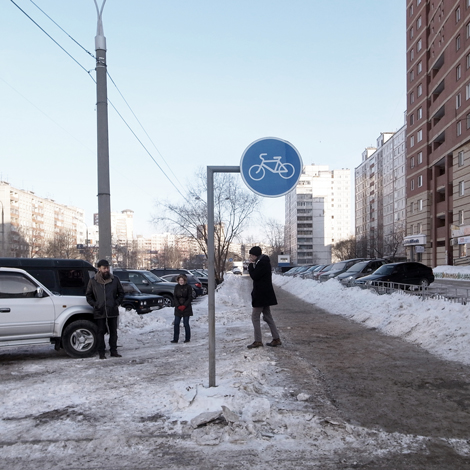 |
urban investigation
/ strategic approach
заказчик: Municipality of Perm
проектная команда: Jörn Schiemann, Otto Weyers, City
Project Bureau Perm
фотография: schiemann weyers
состояние: commission (2012) |
The history of urban systems reveals that infrastructures of mobility,
especially streets, always had a massive influence on the development
of social structures and hereby on the development of city. Streets
did not only connect important points of commercial and cultural interaction,
they were also closely connected to their immediate spatial context.
As being multifunctional spaces and also being interfaces between
public and private - in both ways - they were not only traffic spaces.
They fulfilled various functions for the adjoining surroundings. This
specific mixture is known as street culture or ‘street live’.
(‘Street Life’, Ali Saad, Bauwelt 6 | 2012)
Perm city knows various streets where ‘street live’ (even
at -20 degrees) is still tactile, but a substantial part of Perm city
profiles - and this investigation is dealing with this part - can
be classified as unsubstantial voids.
Pragmatic subdivision of urban space in discrete, functional components
can be blamed for this defect, the same can be applied to the size
of space allocated to the car or otherwise left abandoned.
Aim of the approach is to create conditions for social interaction
and to intensify the relationship public-private. The public space
concept of the PSM forms the basis for this strategy. |
|
